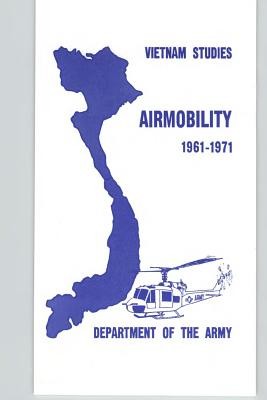
- We will send in 10–14 business days.
- Author: John J Tolson
- Publisher: CreateSpace Independent Publishing Platform
- Year: 1999
- Pages: 320
- ISBN-10: 1494721848
- ISBN-13: 9781494721848
- Format: 15.2 x 22.9 x 1.7 cm, minkšti viršeliai
- Language: English
- SAVE -10% with code: EXTRA
Reviews
Description
The purpose of this study is to trace the evolution of airmobility in the U.S. Army. The integration of aircraft into the organic structure of the ground forces is as radical a change as the move from the horse to the truck, and the process is only beginning. Because this change is not the product of one man or one small group of men but rather a fortunate confluence of technology, tactics, and imagination, proper credit to every responsible individual is impossible. I have tried to identify some of those people who made a major contribution throughout the years. I apologize to those people whose names have been omitted either because of oversight or lack of space. Although Vietnam was the first large combat test of airmobility, air assault operations in Southeast Asia would not have been possible without certain key decisions a decade earlier. This study attempts to trace the most important milestones which led to the eventual formation of airmobile divisions. It would be impossible in a single volume to adequately describe every airmobile operation in Vietnam during the years 1961-197l. Therefore, only selected operations have been chosen as examples of different airmobile tactics. Many of these were selected because of the author's personal knowledge. Another author might have selected different operations. I believe I'd be remiss.in this account if I were not candid with the reader on some of the pros and cons of airmobility. Thus, throughout the text, I have inserted comments that are intended to broaden the reader's view of this issue. This study is aimed at a broad audience, some of whom may only have a passing familiarity with Army aircraft systems. These systems are pictured in an appendix with appropriate data on each. Over 300 major source documents were reviewed during the preparation of this study. For the serious student we have identified a rich vein that, as yet, has not been deeply mined. Thousands of important stories, yet untold, lay buried in these pages. Length has permitted us to extract only a few.
- Author: John J Tolson
- Publisher: CreateSpace Independent Publishing Platform
- Year: 1999
- Pages: 320
- ISBN-10: 1494721848
- ISBN-13: 9781494721848
- Format: 15.2 x 22.9 x 1.7 cm, minkšti viršeliai
- Language: English English
The purpose of this study is to trace the evolution of airmobility in the U.S. Army. The integration of aircraft into the organic structure of the ground forces is as radical a change as the move from the horse to the truck, and the process is only beginning. Because this change is not the product of one man or one small group of men but rather a fortunate confluence of technology, tactics, and imagination, proper credit to every responsible individual is impossible. I have tried to identify some of those people who made a major contribution throughout the years. I apologize to those people whose names have been omitted either because of oversight or lack of space. Although Vietnam was the first large combat test of airmobility, air assault operations in Southeast Asia would not have been possible without certain key decisions a decade earlier. This study attempts to trace the most important milestones which led to the eventual formation of airmobile divisions. It would be impossible in a single volume to adequately describe every airmobile operation in Vietnam during the years 1961-197l. Therefore, only selected operations have been chosen as examples of different airmobile tactics. Many of these were selected because of the author's personal knowledge. Another author might have selected different operations. I believe I'd be remiss.in this account if I were not candid with the reader on some of the pros and cons of airmobility. Thus, throughout the text, I have inserted comments that are intended to broaden the reader's view of this issue. This study is aimed at a broad audience, some of whom may only have a passing familiarity with Army aircraft systems. These systems are pictured in an appendix with appropriate data on each. Over 300 major source documents were reviewed during the preparation of this study. For the serious student we have identified a rich vein that, as yet, has not been deeply mined. Thousands of important stories, yet untold, lay buried in these pages. Length has permitted us to extract only a few.


Reviews